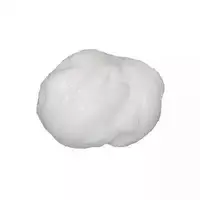Sugar mastic

Not only experienced confectioners, but amateur newcomers are probably familiar with sugar mastic. Moreover, the former have already filled their hands in working with this rather capricious product, while inexperienced culinary experts are still just looking at this elastic mass, interested in the subtleties and secrets in handling sugar mastic.
The dough-like sugar mass, after being brought into the necessary consistency by rolling with a rolling pin or prolonged kneading, is used to coat cakes and sculpt decorative confectionery products such as figurines and flowers. If desired, sugar mastic is colored with various food colors or flavored with some flavors.
Starting to work, the sugar mastic is thoroughly kneaded, rolled out on a table, sprinkled with sugar powder or starch to avoid sticking the paste to the surface and hands. It cannot be laid out directly on the pastry cream - first, it is necessary to cover it with a thin layer of biscuit or fat-containing cream. After work, the mastic is carefully covered with film so that it does not curl and dry out.
Sugar mastic can be made at home - fortunately, there are a lot of recipes for its preparation. Someone prefers to cook it with marshmallow marshmallow, someone likes gelatin or dairy. However, there is also another option - today you can buy ready-made mastic without any problems. True, in Russia this product is not made, in connection with which only foreign-made sugar mastic can be bought. As a rule, pasta is called gum paste or sugar paste, sugar paste, fondant, modeling paste, plastic or gelatin mass.
When sugar mastic jewelry is made, it is better to dry it outdoors before placing it on a confection. In general, the procedure for making cakes using sugar mastic consists of several stages. At first, the figures and details necessary for decoration are molded in advance (you can even in a week, but the main thing is to store them in a closed container). Baking cakes directly, layering them and enveloping them with ganache or butter cream is the next step.
Now the most creative process begins - rolling out sugar mastic to cover the entire surface of the cake, as well as installing finished products on it. Flowers are connected to a mastic surface and to each other using a drop of water or special confectionery glue. It is enough to brush off the remains of the powder and the culinary masterpiece is ready.
sugar mastic 393 kCal
Energy value of sugar mastic (Ratio of proteins, fats, carbohydrates - ju):
Proteins: 0 g (~ 0 kCal)
Fats: 1 g (~ 9 kCal)
Carbohydrates: 96g (~ 384kCal)
Energy ratio (bj | y): 0% | 2% | 98%
 Español
Español Français
Français Português
Português Русский
Русский 简体中文
简体中文 繁體中文
繁體中文 日本語
日本語 한국어
한국어 العربية
العربية Türkçe
Türkçe Қазақ
Қазақ Deutsch
Deutsch Italiano
Italiano Українська
Українська
